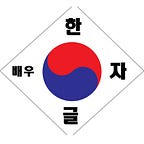The media’s account during the bombing of Darwin was subject to much censorship and the government was not transparent about the true damage by the Japanese, including the many civilian casualties.
Similarly, the media’s reporting on the midget submarine attack at Sydney Harbour was also censored, and newspapers that revealed too much information were charged by the government.
The Bombing of Darwin, 1942
One example of inaccurate reporting by the media is Bombing of Darwin on 19 February 1942. This was mainly due to the lack of information available to the media, and the censorship of information that was seen as the government to be detrimental to the Australian people.
The only source of information the media had access to at the time were official press releases by the government, and in this case, a statement issued by Prime Minister Curtin himself.
In a statement released by The Age, Prime Minister Curtin acknowledges Australia’s damages from the Japanese attack, however he does not go into further details regarding casualties or Australia’s plans for the future.
The newspaper also reports that 72 enemy bombers accompanied by fighters participated in the first raid, however in reality there were 152 bombers accompanied by 36 fighters.
According to government records, only 57 total Japanese aircraft were recorded in the first raid. It can be assumed that numbers were not accurate as there were no formal documents available from Japan at the time, while we can now access information from Japanese archives for more accurate information.
Furthermore, the newspaper made no mention of the 6 RAAF servicemen and over 20 civilians in the township who were killed.
Inaccurate reports from questionable sources
The meeting minutes below of the Australian Advisory War Council indicates that the Chief Publicity Censor from the Department of Information forbid sensationalist reports of the enemy unless officially confirmed. Even reports from Australia’s ally, the UK were regulated.
The “supposed bombing of Darwin” refers to incorrect reports by the Sunday Telegraph and the Truth newspapers, who received sources from the Japanese. These misguided claims may have stemmed from the Japanese victory against Australian troops in the Battle of Muar from 14–22 January 1942, around the time of the meeting. Japanese discussion of invading war also started in January, and some Australians were fearful of a full Japanese invasion.
It can be concluded that for the bombing of Darwin, censorship by the government was not heavy, and the information by the press gave information only from official government reports. The only censorship that occurred during this time frame was reports by press spreading misinformation from an unreliable (Japanese) source.
Midget Submarine Attacks at Sydney Harbour, 1942
Another example of inaccurate media reports is the midget submarine attacks by the Japanese at Sydney Harbour. In this case, the government censored many of the details at the time.
The General Headquarters in Melbourne states that “damage was confined to one small harbour vessel of no military value”.
While the vessel itself was unarmed and not important to the navy, it is significant that 21 sailors were killed in the attack (unmentioned in the report).
Inaccurate TV Reports Overseas
The account by British Movietone of the Sydney Harbour attack, published in August 1942, is another example of inaccurate media reporting on the Sydney Harbour attack. The video claimed that only “two lives were lost”, while in reality there were 21 deaths.
The video also claimed that “the submarines were caught by the fishermen”. This suggests that the Australians succeeded in retrieving all the submarines, even though one of the submarines, the M24 was not found until 2006
Government Censorship
Censorship from the government was heavier at the time. The Navy requested censorship of all information on the personnel and equipment involved in the midget submarine attack. However, the Government also suggested lifting censorship to prevent misinformation from the press.
Newspapers like Sydney Morning Herald were not rebuked by the Government and the Navy, however the Navy attempted to charge Smith’s Weekly for releasing a story that was believed to cause political damage. Smith’s Weekly had published an account by a night watchman whose report of a sighted enemy submarine was allegedly ignored by the Navy.
Although censorship was heavier during the Sydney Harbour attack compared to the Bombing of Darwin, newspapers never published completely incorrect information as directed by censors and the government.
Conclusion
The media’s reporting on the Japanese attacks in Australia was only accurate to a small extent.
- Censorship by the government prevented details such as true casualties and extent of the attack from reaching the public.
- Media reporting was especially inaccurate during the bombing of Darwin, where there was no mention of civilian casualties or the true severity of the Japanese attacks.
- The information presented by the media was inaccurate during the attacks on Sydney Harbour, and numbers were misrepresented.
- Newspapers that published any incriminating material about the government were subject to consequences by the censors.
